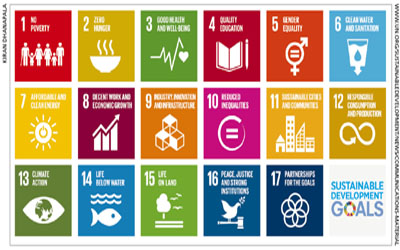CORPORATE SUSTAINABILITY
BUSINESS: FROM ZERO TO HERO
Kiran Dhanapala explains the nexus between sustainability and biz profits

Sustainability is possibly the only area where achieving zero is actually celebrated as a success! The fundamental concept of the ‘zero’ in sustainability is straightforward – it’s a state of harmonising our actions where we give back as much as we take.
But at what are these zeros aiming?
They are geared to ensuring that growth – be it that of a company or country – has a zero negative impact. Or in other words, delinking growth and improving the quality of life without having detrimental impacts. And judging by the number of companies moving towards zero sustainability goals, they also lead to positive profits.
Welcome to a new world of zero-impact growth.
Unilever, Patagonia and many other leading sustainable companies are engaging in it. Let us consider Interface, which works towards a ‘Mission Zero’ to eliminate any negative environmental impacts by 2020 – which is not far away, one might add!
This refers to zero waste, benign emissions, renewable energy, closing the loop, resource efficient transportation, redesigning commerce and so on.
However, it isn’t only corporates that are moving towards this zero status; this includes countries, public organisations and universities. For instance, Bhutan is not only carbon-neutral (i.e. zero) but also carbon-negative, thanks to its forests being safeguarded. Another example is the University of California, Merced, which has made a ‘Triple Zero’ commitment – the campus pledges to consume zero net energy, and produce zero waste and zero net greenhouse gas emissions by 2020.
‘Net zero’ is defined as consuming only as much energy as is produced, achieving a sustainable balance between the availability of and demand for water, and eliminating solid waste sent to landfills.
So who is engaging in interesting ‘zero’ activities?
Heineken, for example, has the world’s first large-scale zero-carbon brewery in Göss, Austria. It produces 1.4 million bottles of beer a day by using a range of technologies and techniques to cut its carbon dioxide (CO2) emissions from about 3,000 tonnes a year, down to zero. But water has proved more challenging to tackle.
In terms of governance, the relevant zeros include those related to issues such as corruption. Transparency International defines corruption as “the abuse of entrusted power for private gain,” which can be categorised as grand, petty or political, depending on the amount of money lost and in which sector it occurs.
Firms are increasingly establishing an anti-corruption plan or Zero Tolerance for Corruption (ZTC) policy. Daily guidance is often delivered through a code of ethics, but an organisation may also join forces with UN Global Compact or the World Economic Forum’s initiatives in this area.
Toolkits and other support is available (e.g. Transparency International’s Business Integrity Toolkit) for building an effective anti-corruption programme. But measuring these zeros may become tricky. So reporting should be very transparent in what it measures, citing a spectrum of indicators including allegations, investigations and dismissals.
Renowned sustainability guru John Elkington has noted that sustainability is a cultural and civilisational challenge – and that changing minds doesn’t always translate evenly into behavioural change. He also notes that outstanding individuals will “break the sustainability barrier” by achieving zero goals (whether this is for emissions, waste or ethical misconduct) for all types of businesses.
In India, highlights from a survey on its sustainability landscape reveal that leading Indian companies are creating sustainable growth models differently. First of all, the top 10 companies in India are all of Indian origin (i.e. they’re not multinationals). The recently troubled Tata Steel ranks No. 1 – and altogether, four Tata Group companies are ranked within the top 10.
While renewable energy initiatives are performing relatively well (thanks to government policies at the federal and state levels), water management is noted as a gap (more so for service than manufacturing firms). Effluent water treatment is higher (57% for manufacturing versus 44% for service companies) than zero wastewater discharges (29% for manufacturing and 20% for service companies).
Moreover, going forward, there will be a shift from looking at zero impact to the more ambitious net positive that is transpiring in India, as already witnessed at the global level. Firms such as Godrej Consumer Products projects a target of achieving a positive water balance by 2020 and Ambuja Cement expects to be five times water positive by 2020.
Some contend that sustainability is more about doing good than reducing the bad. This necessarily advocates moving into a net positive stand. It also means an approach of combining a zero with a positive that allows a pragmatic contribution towards making the world a better place.




